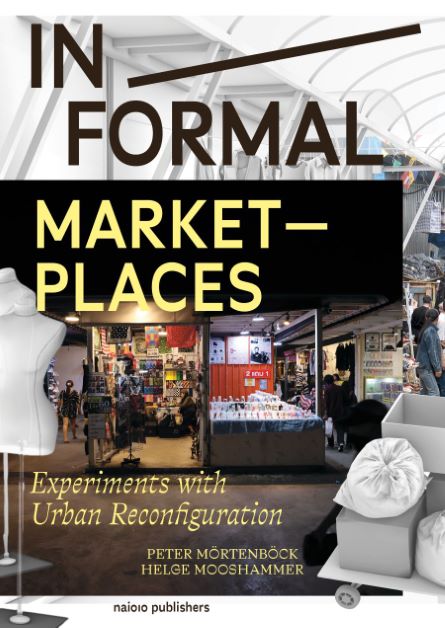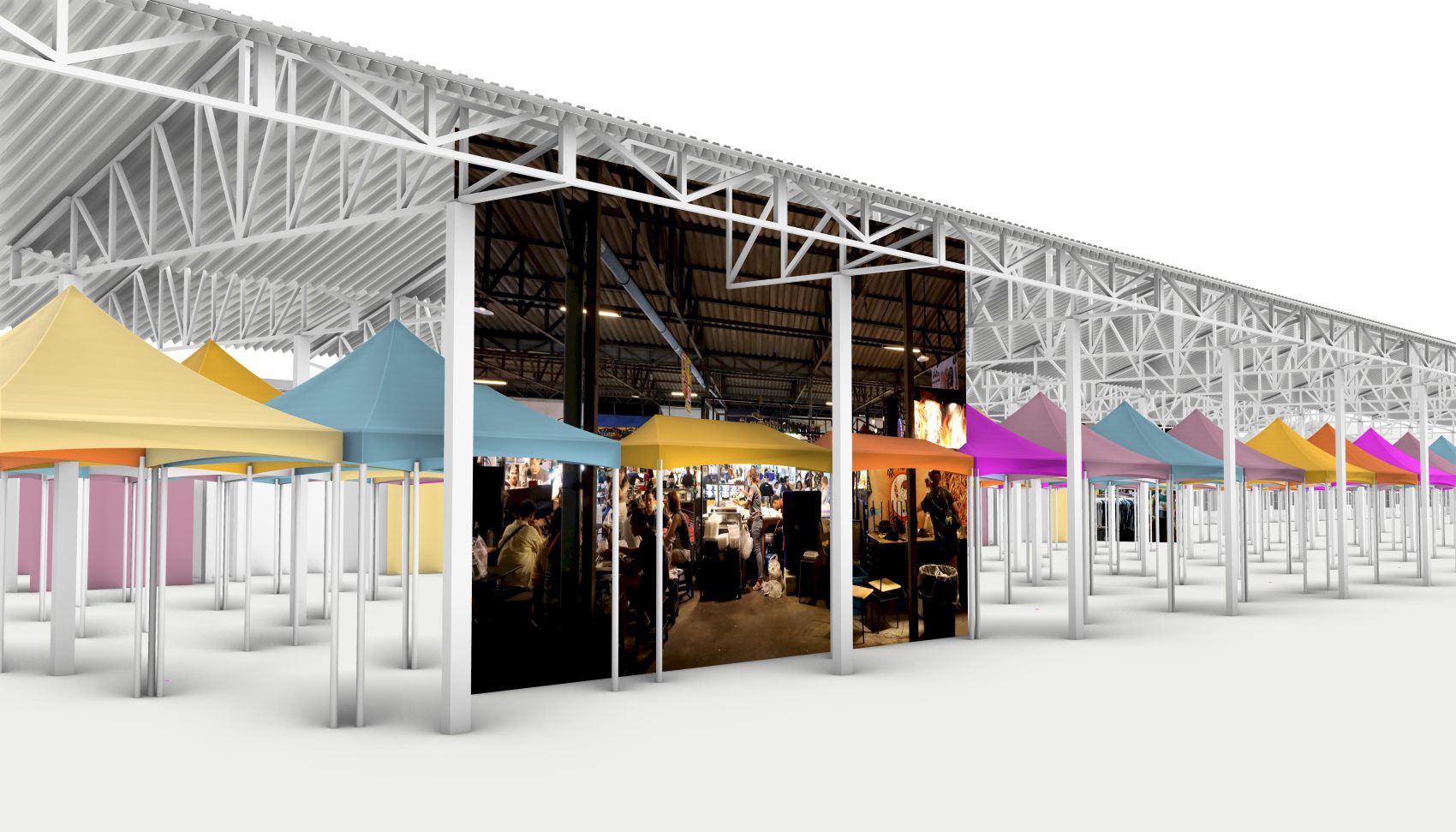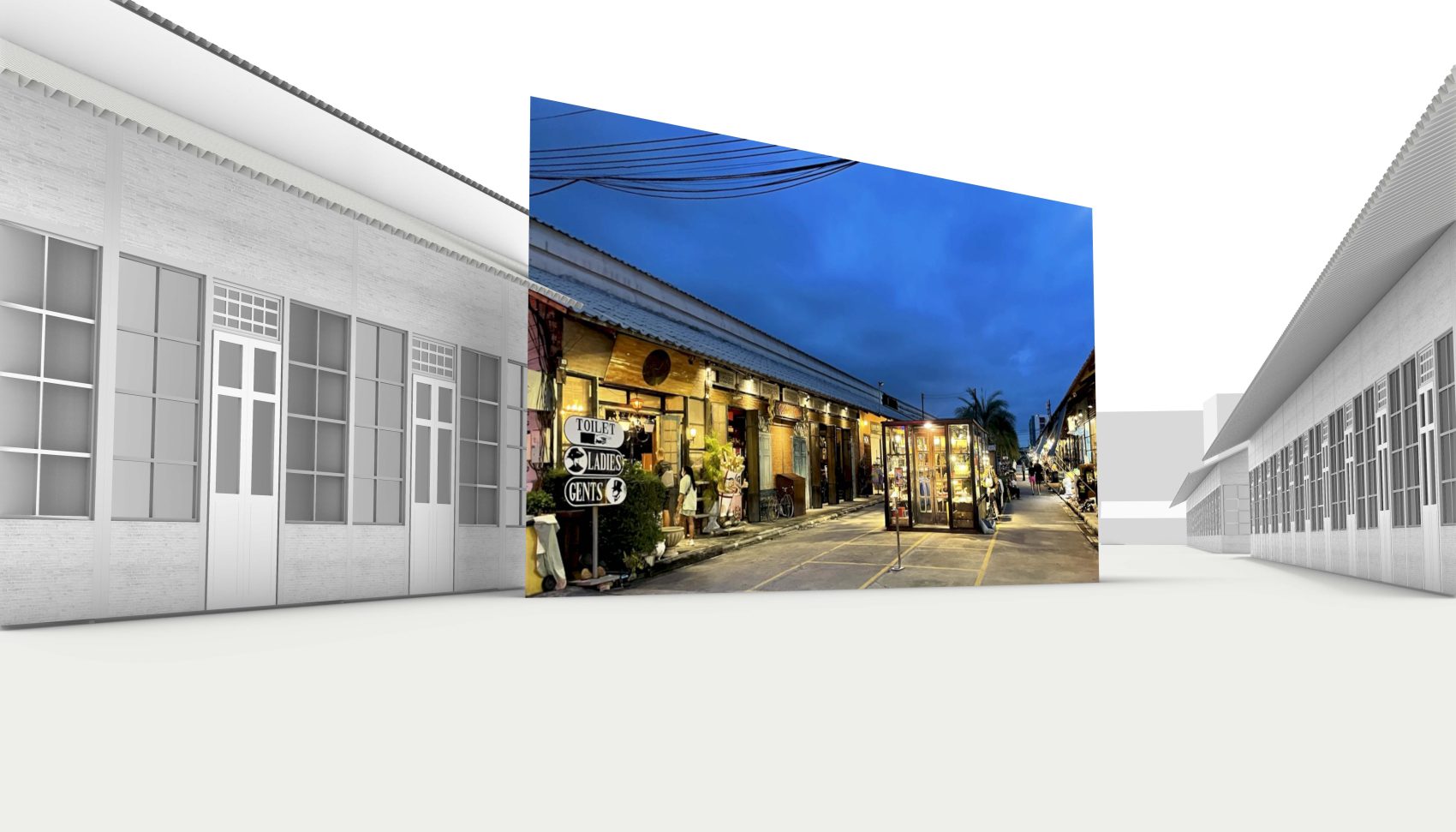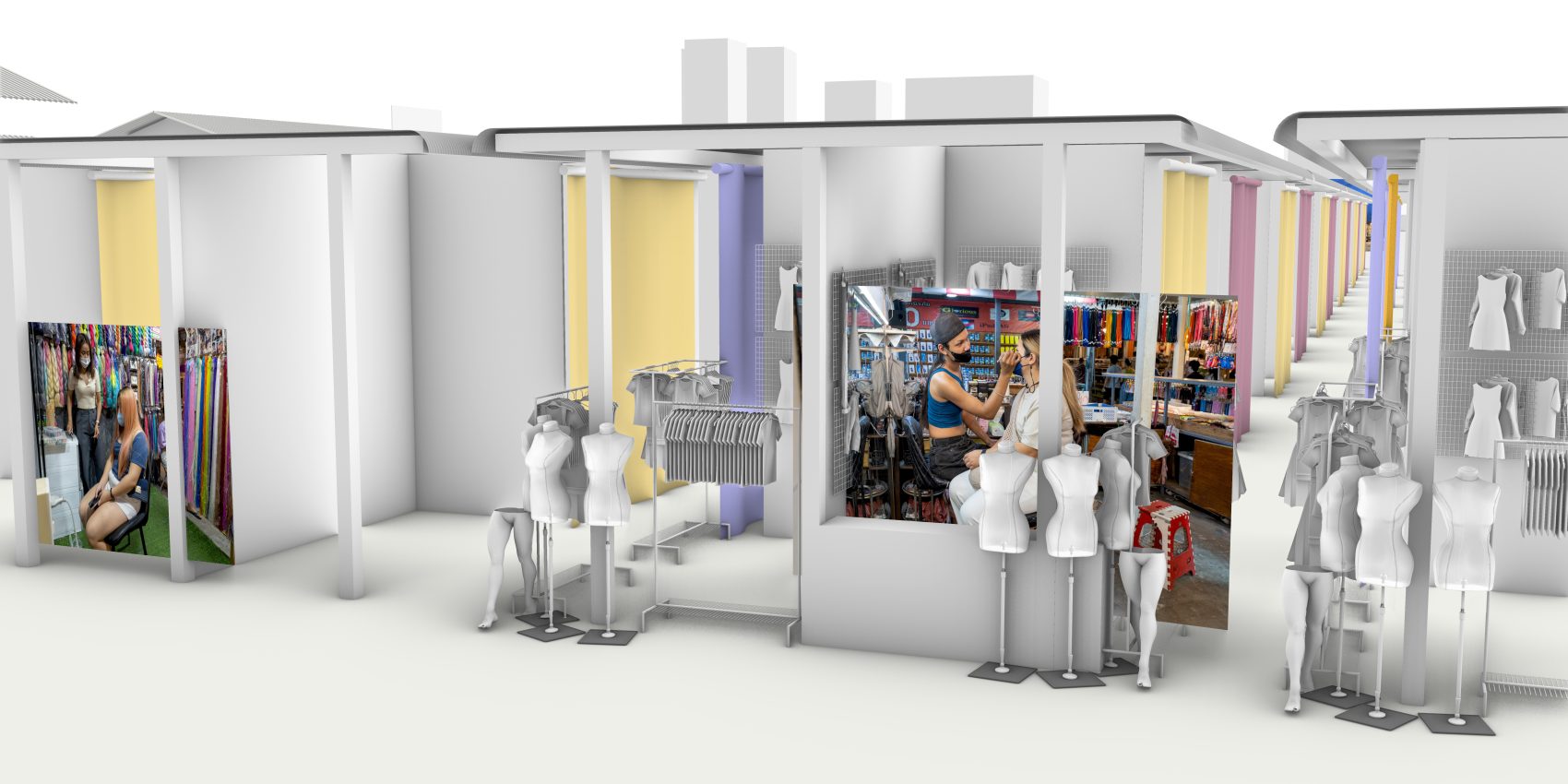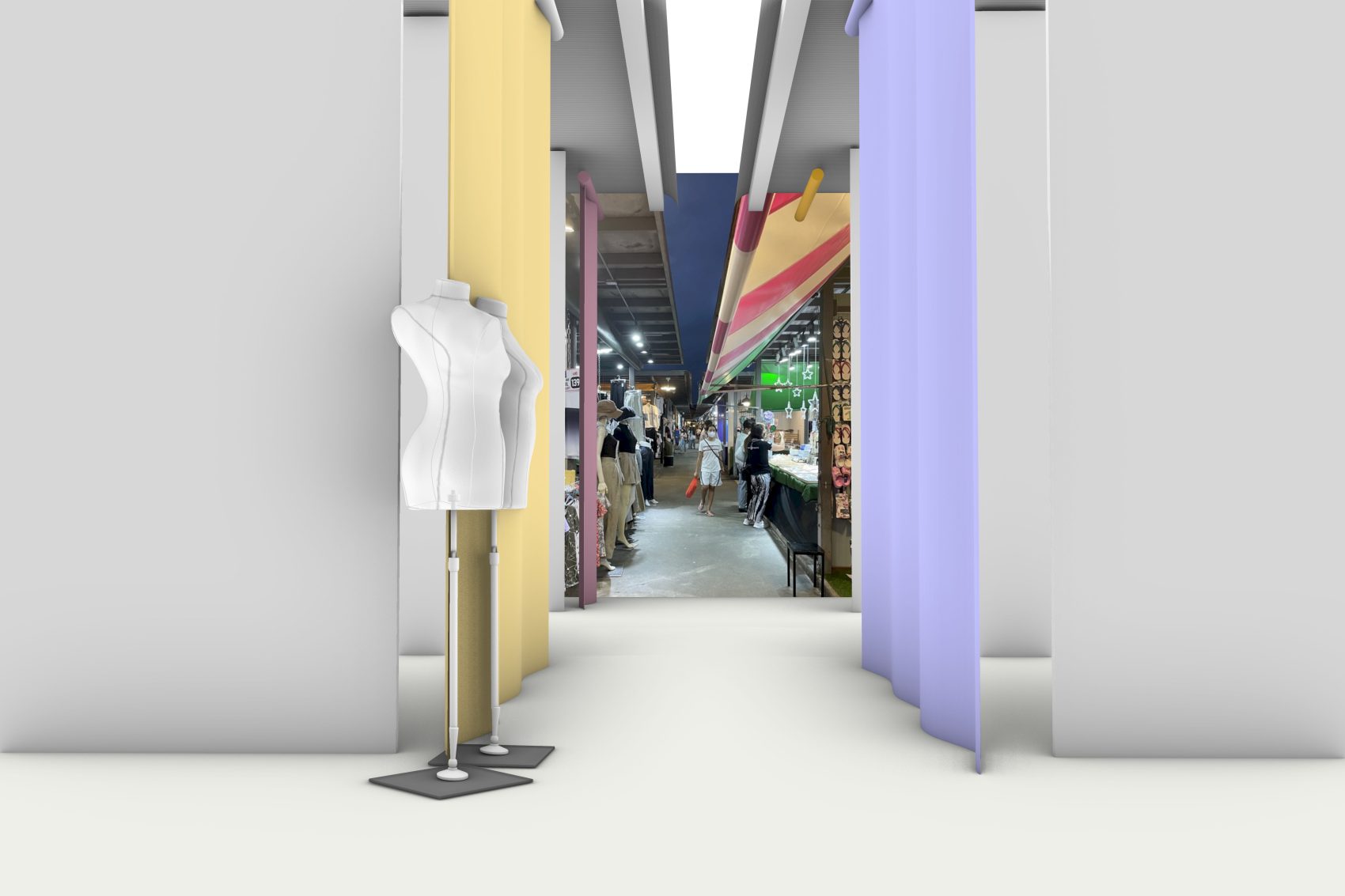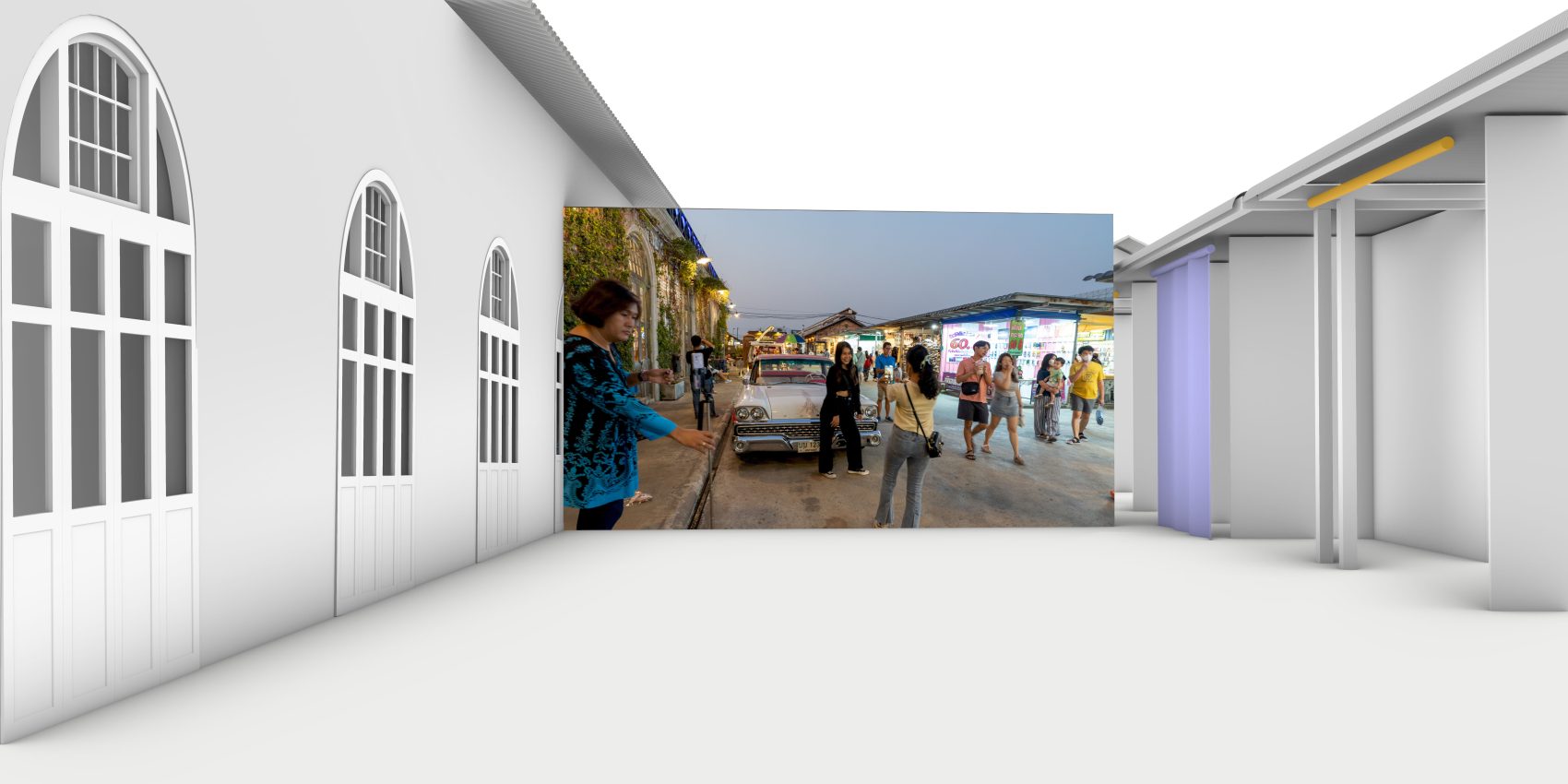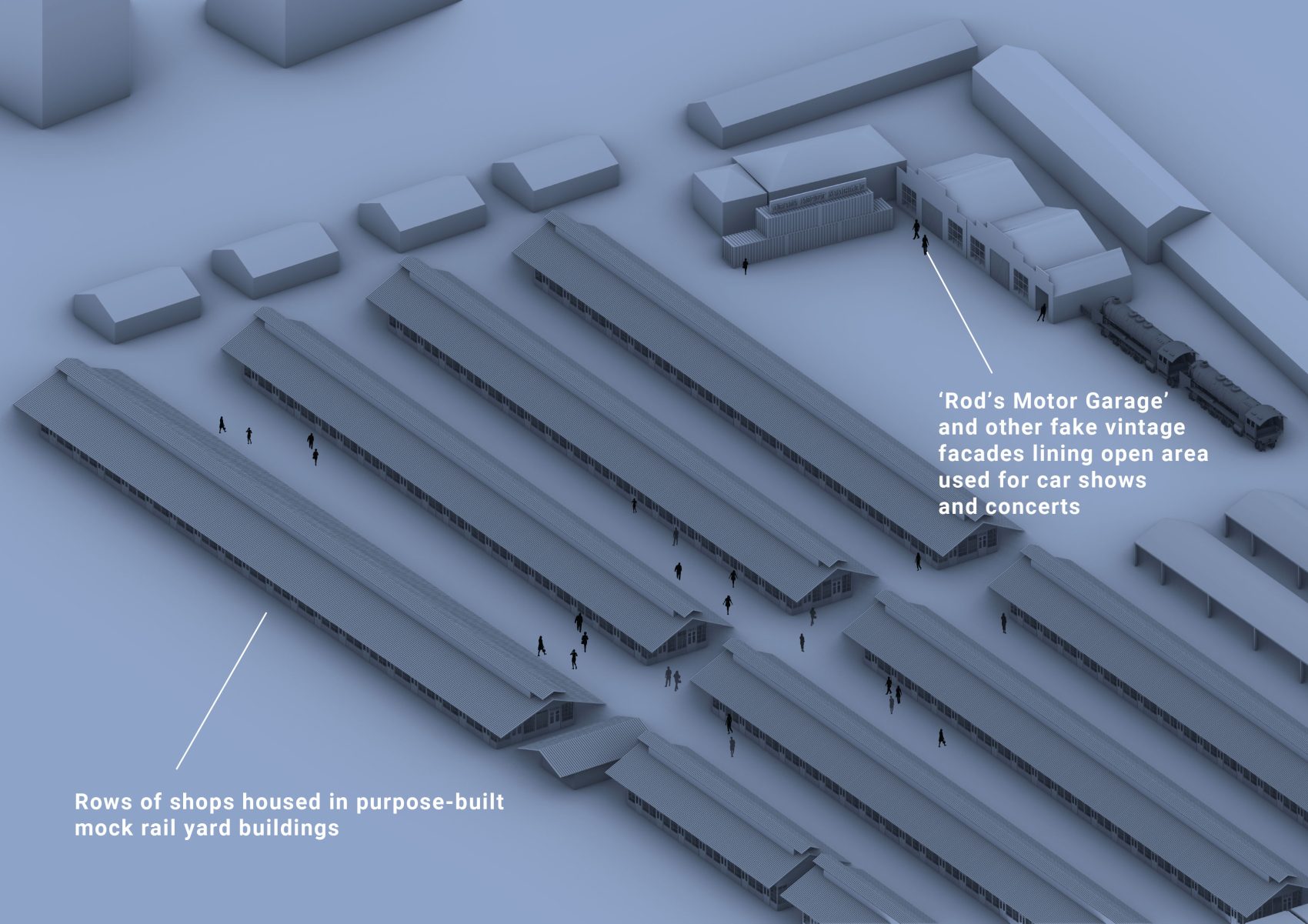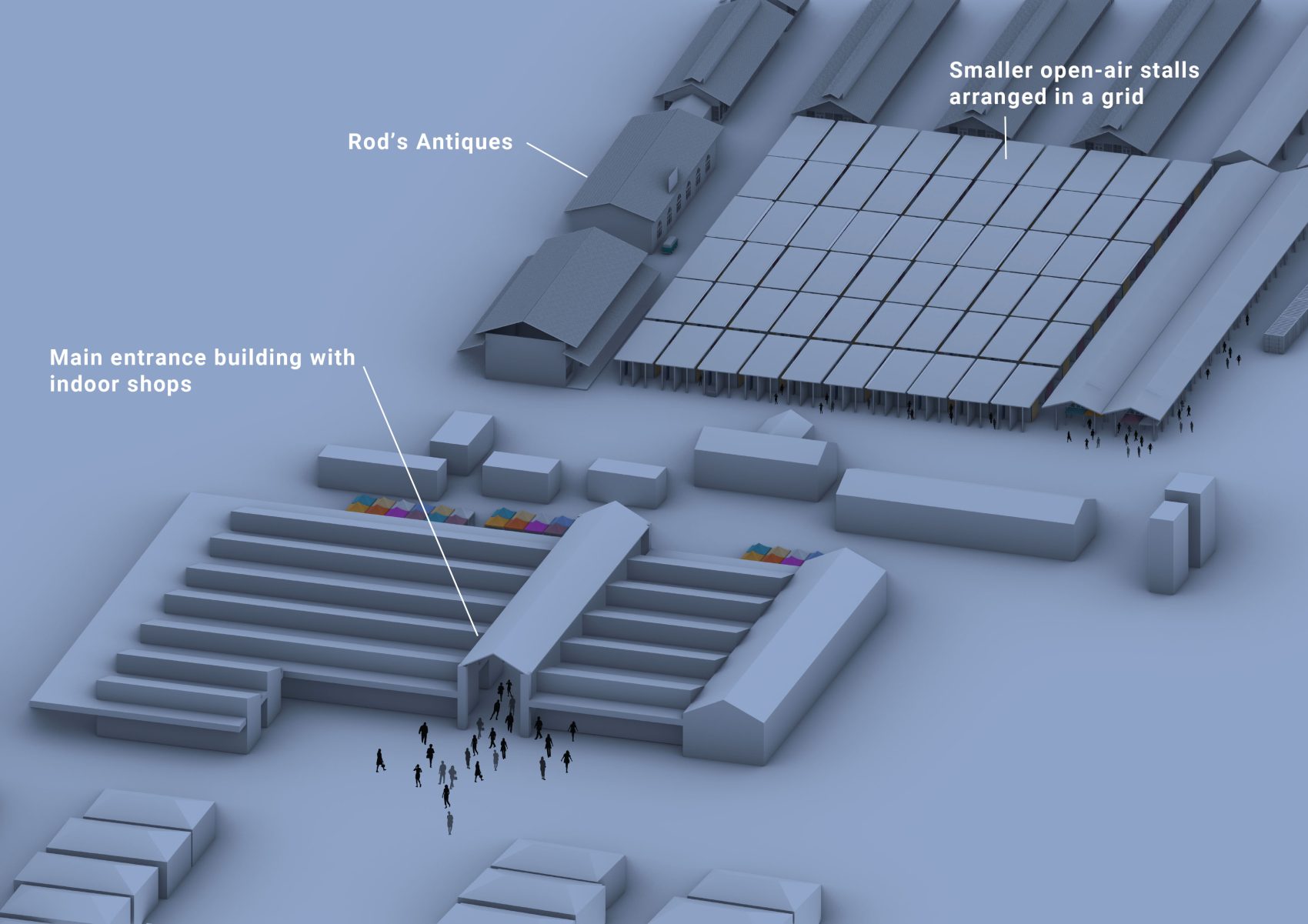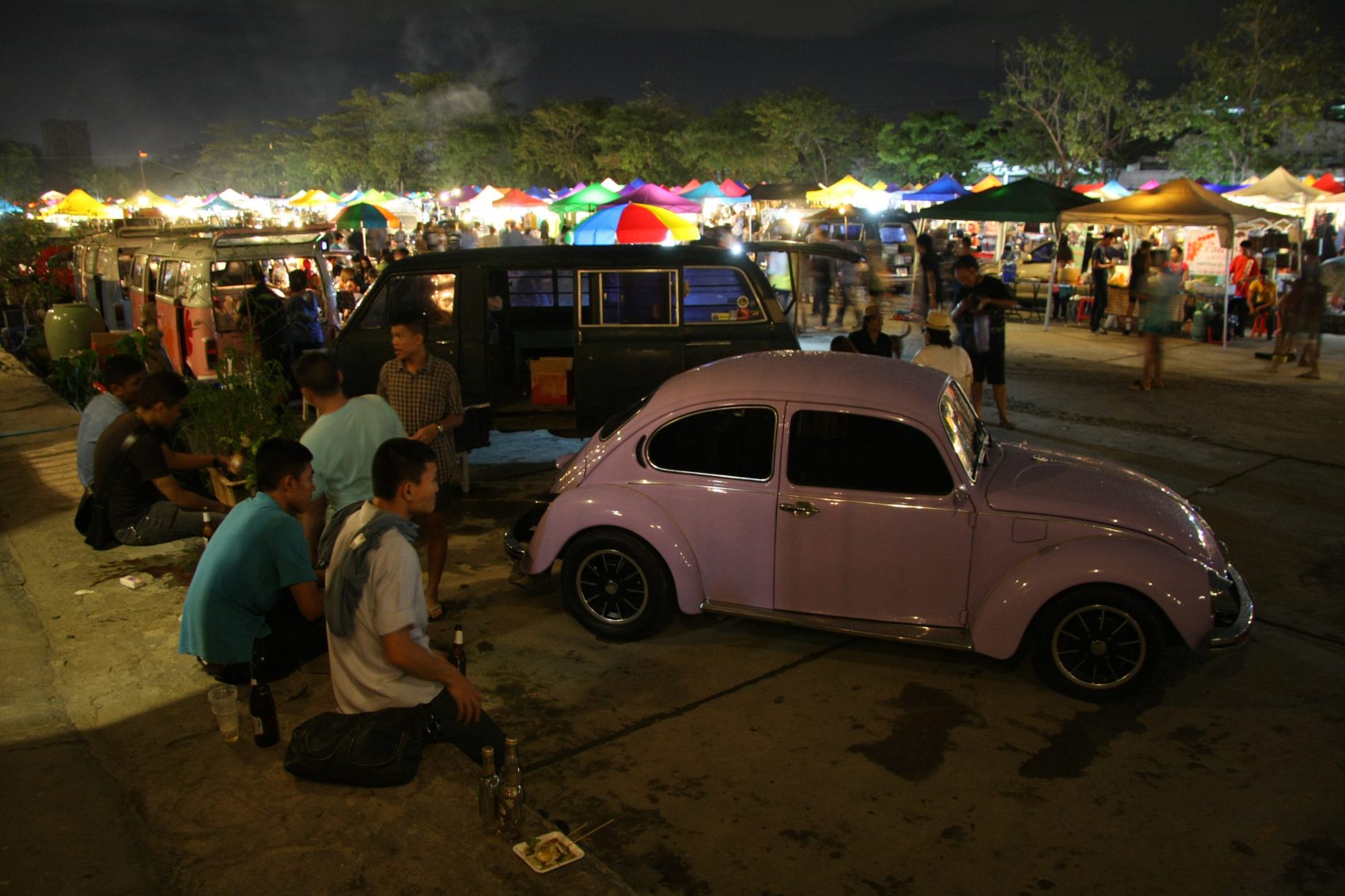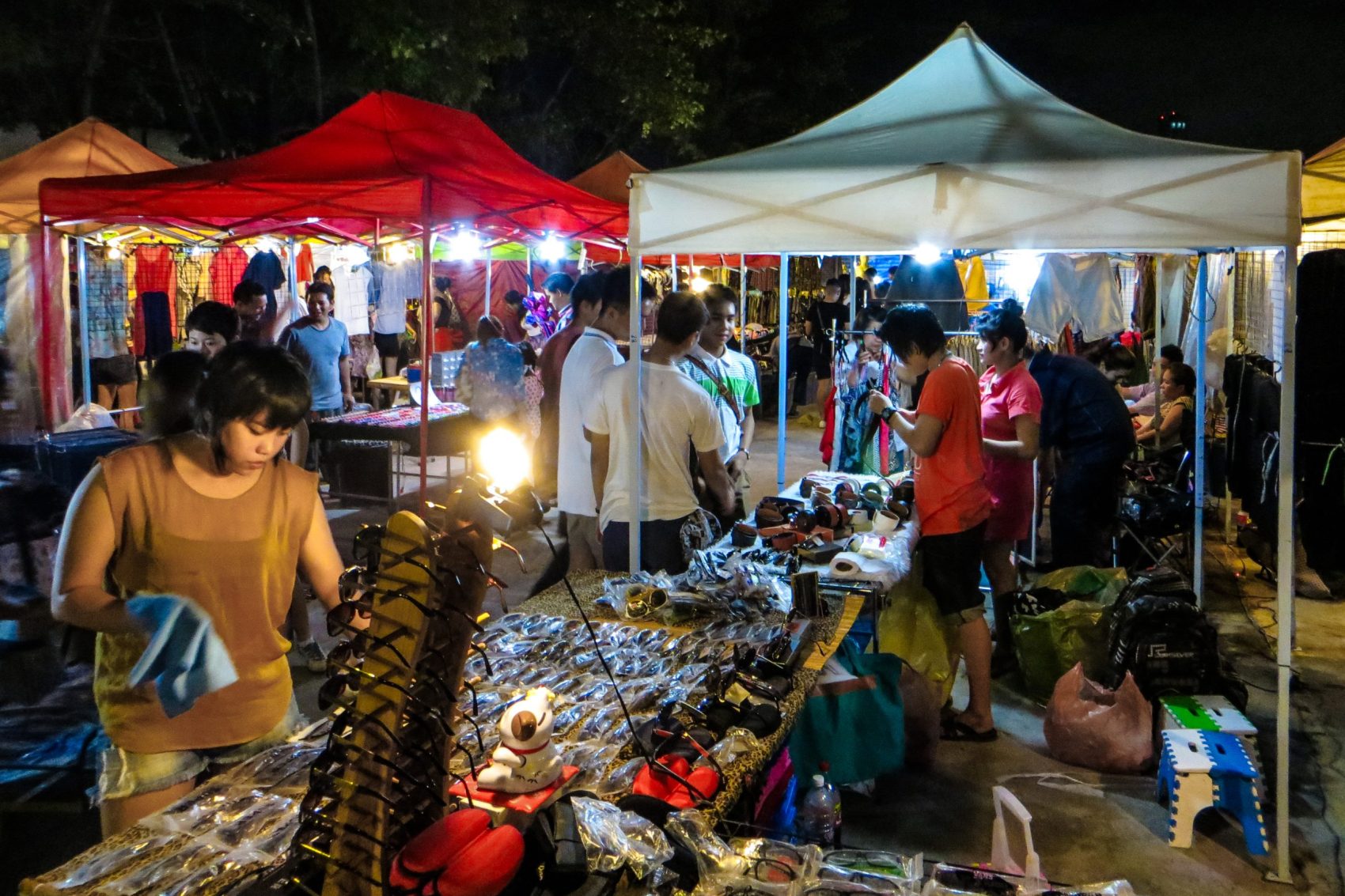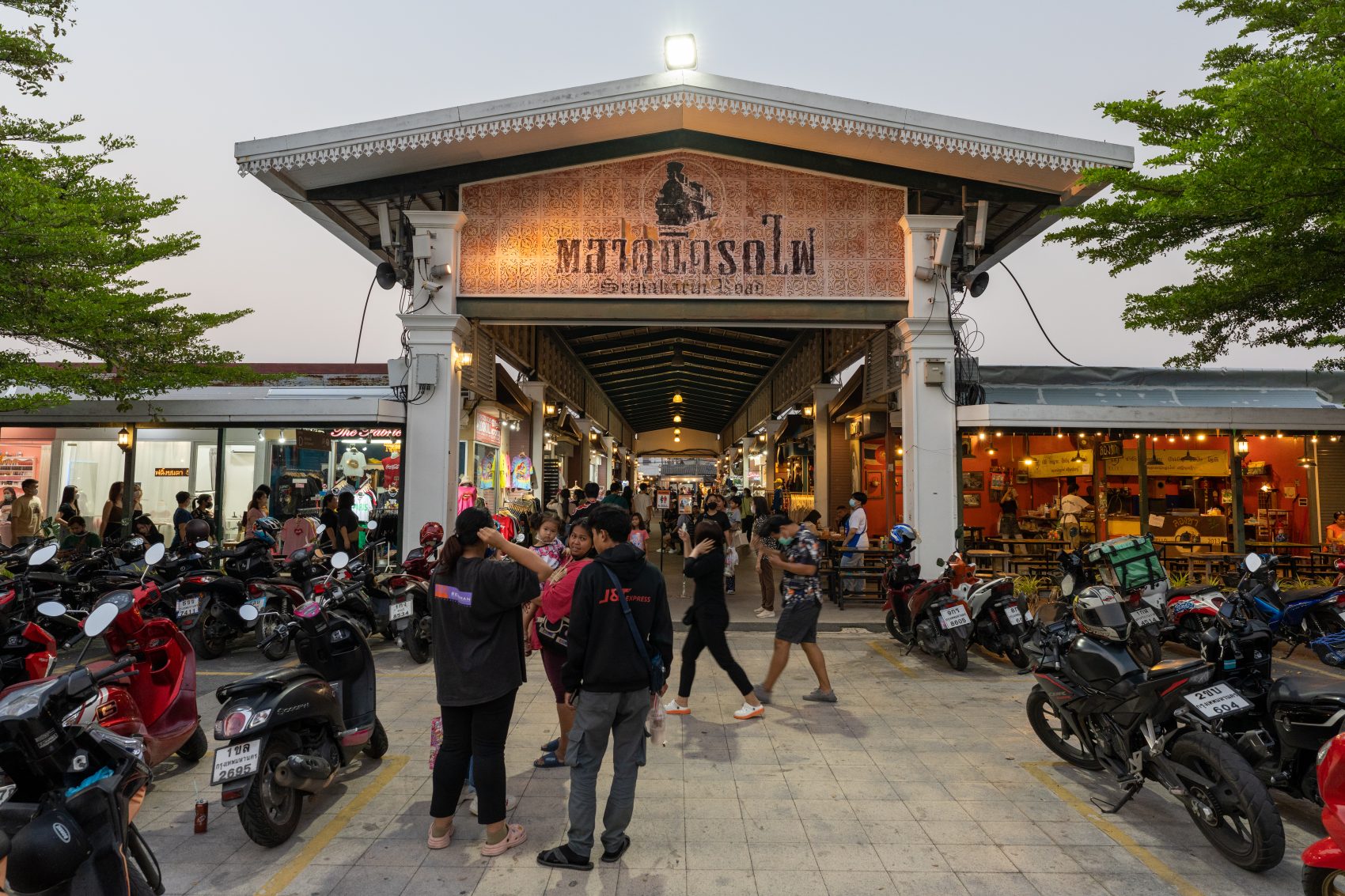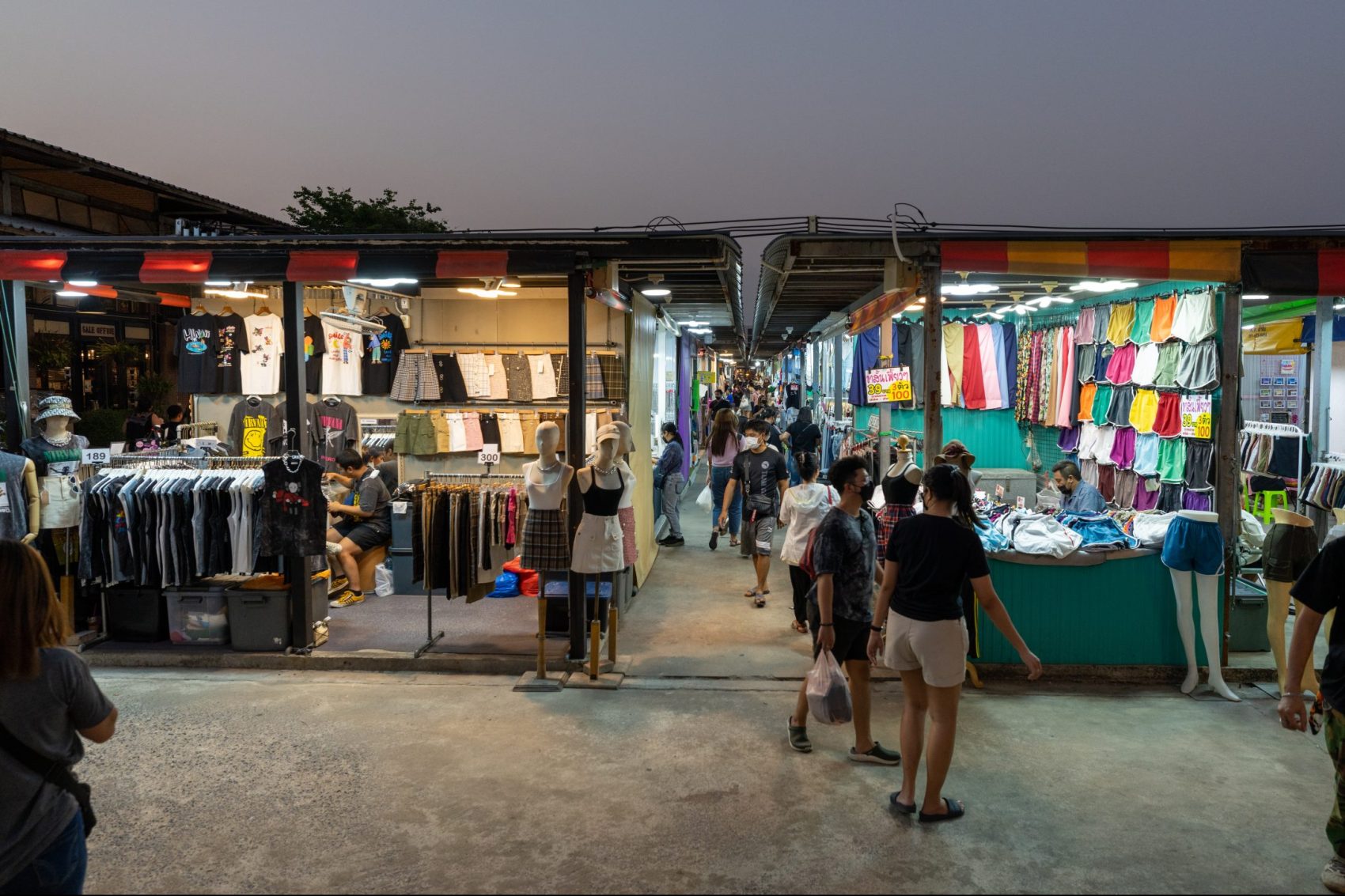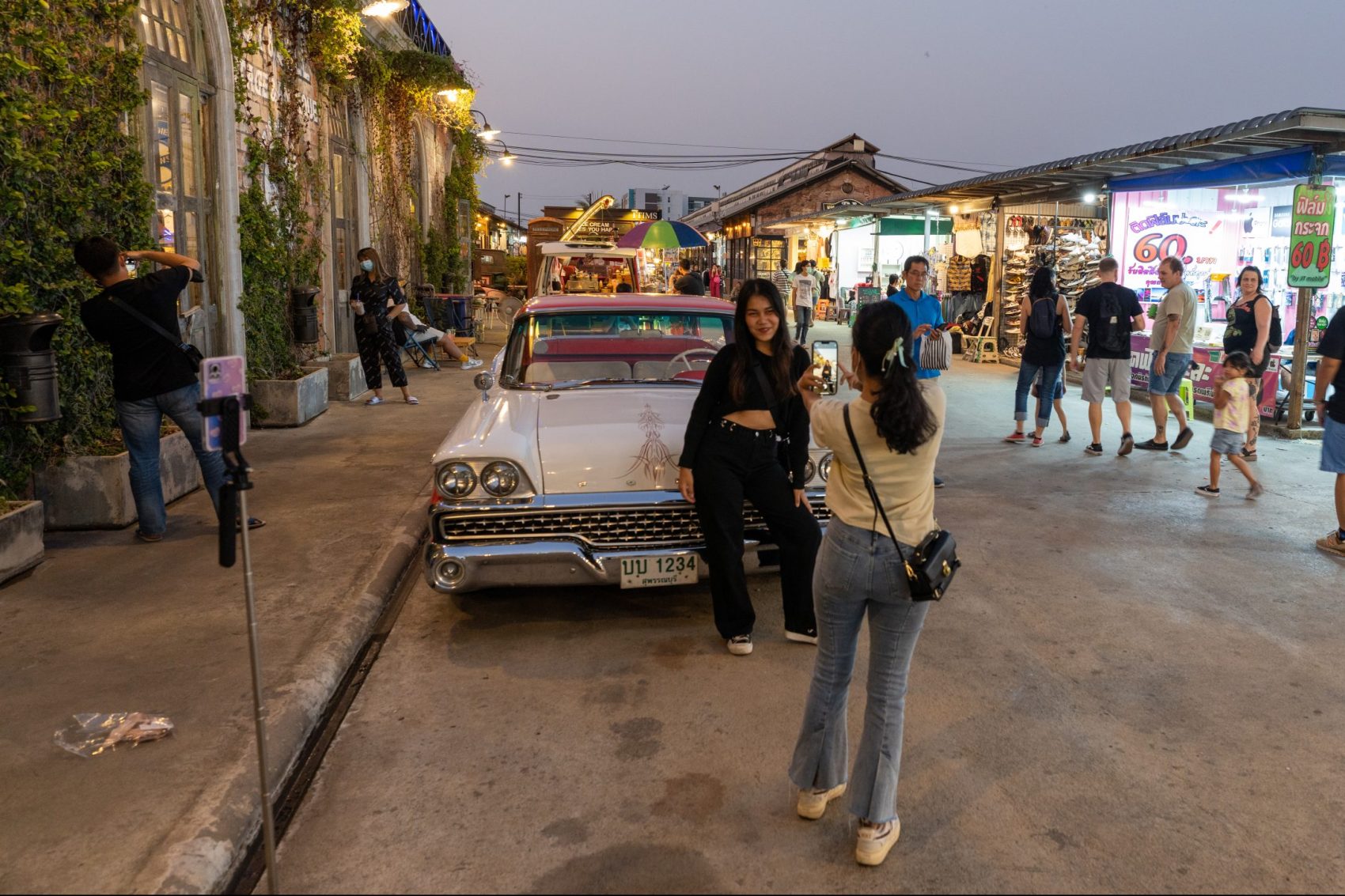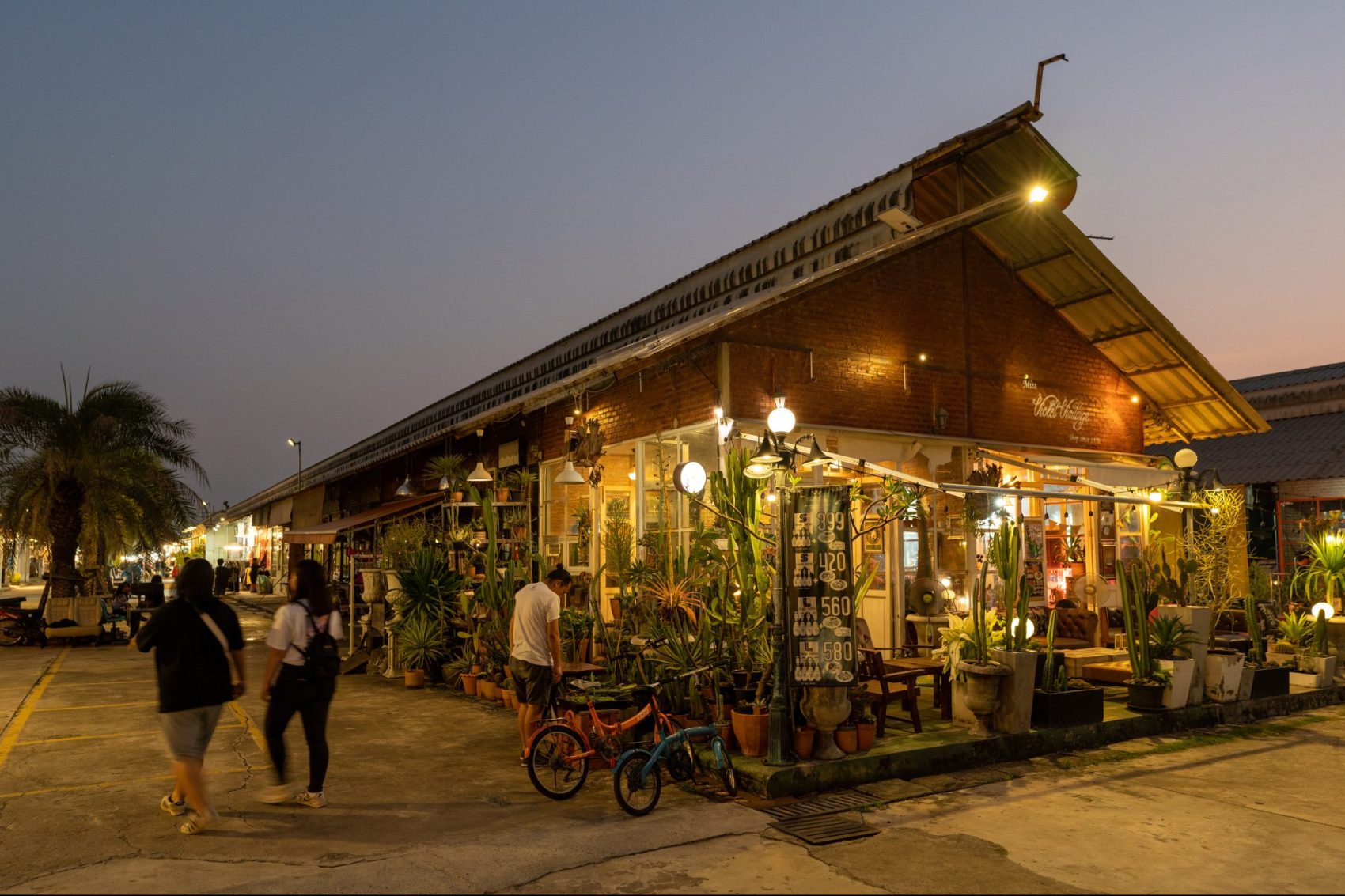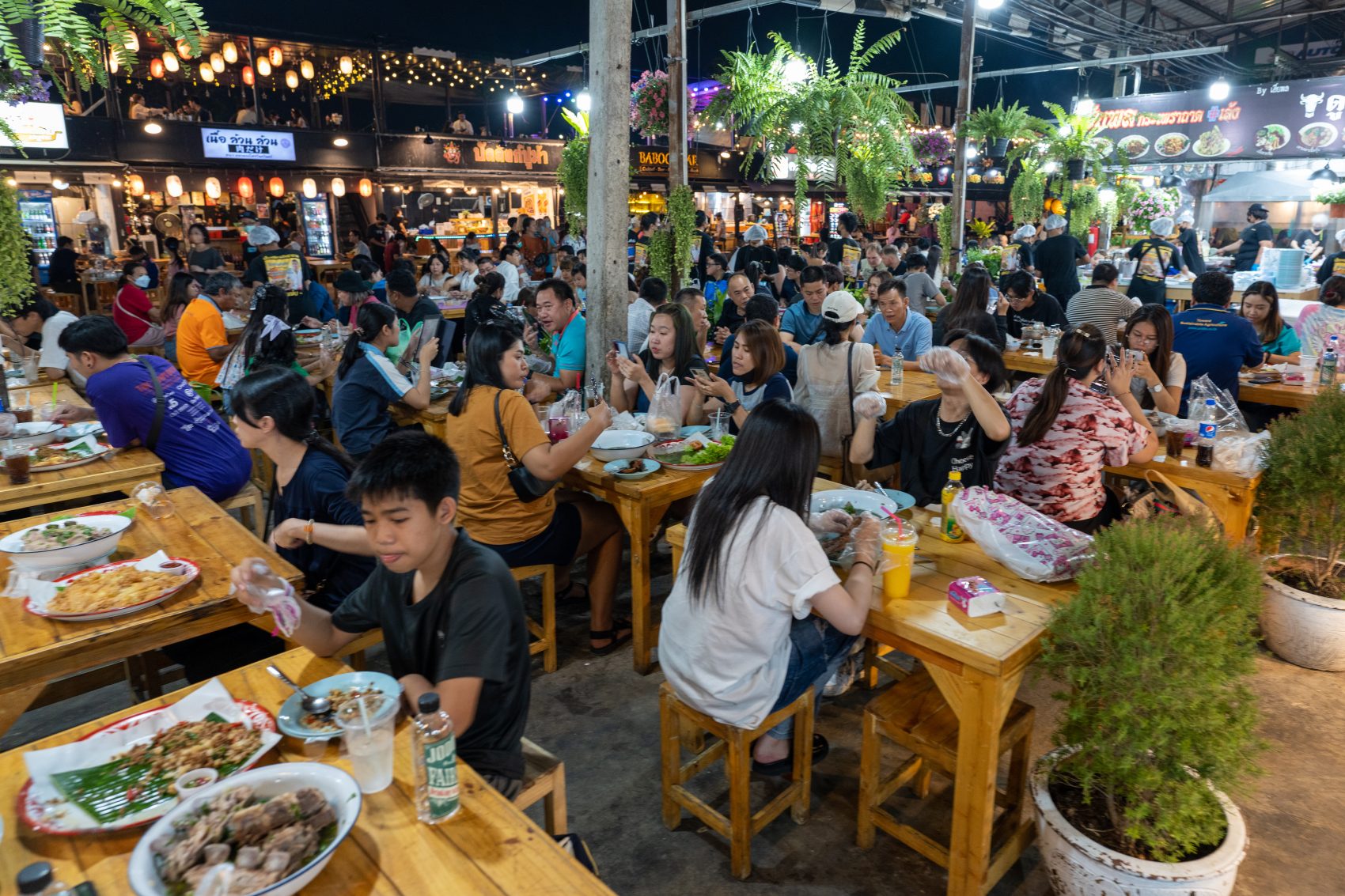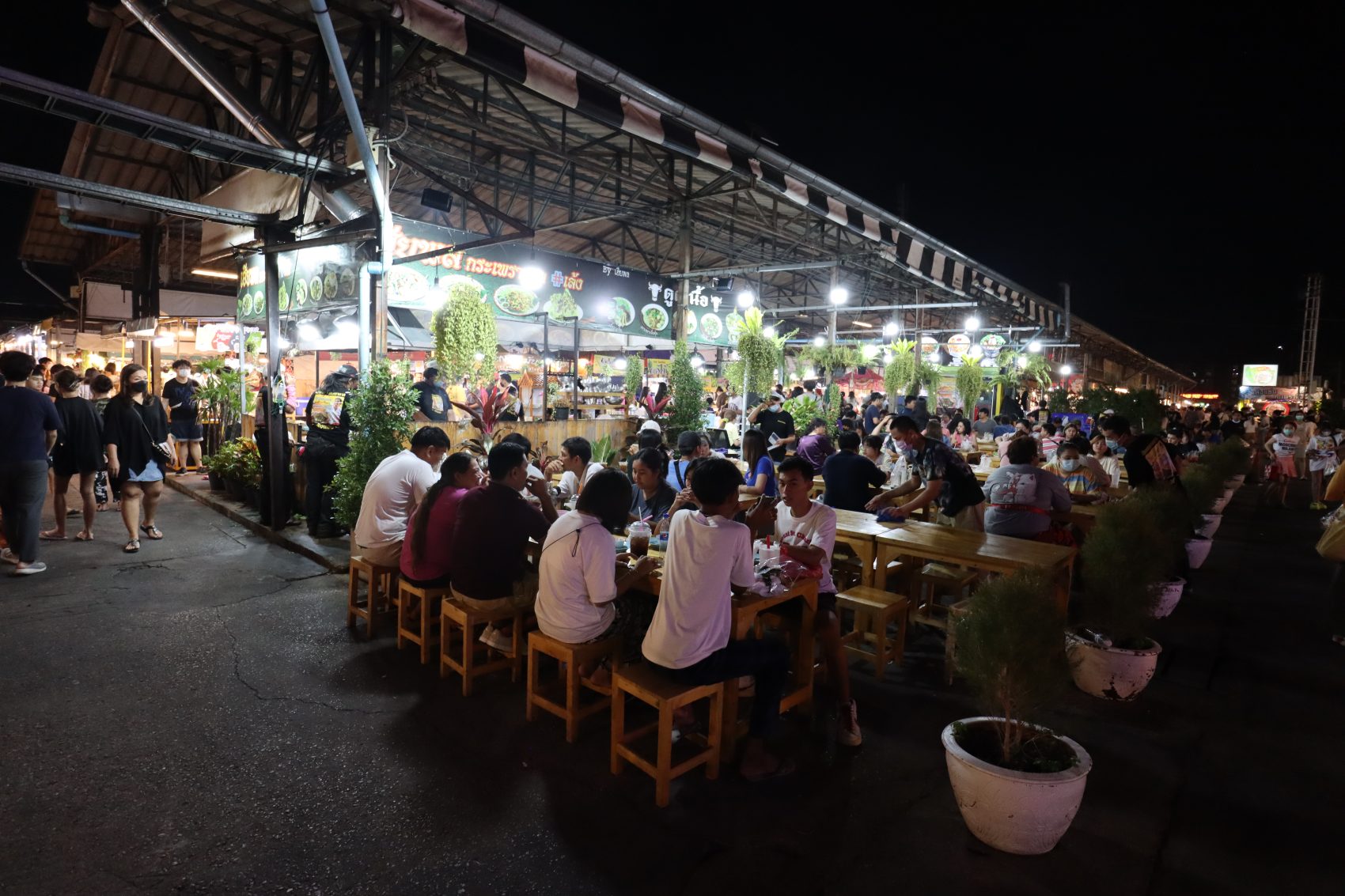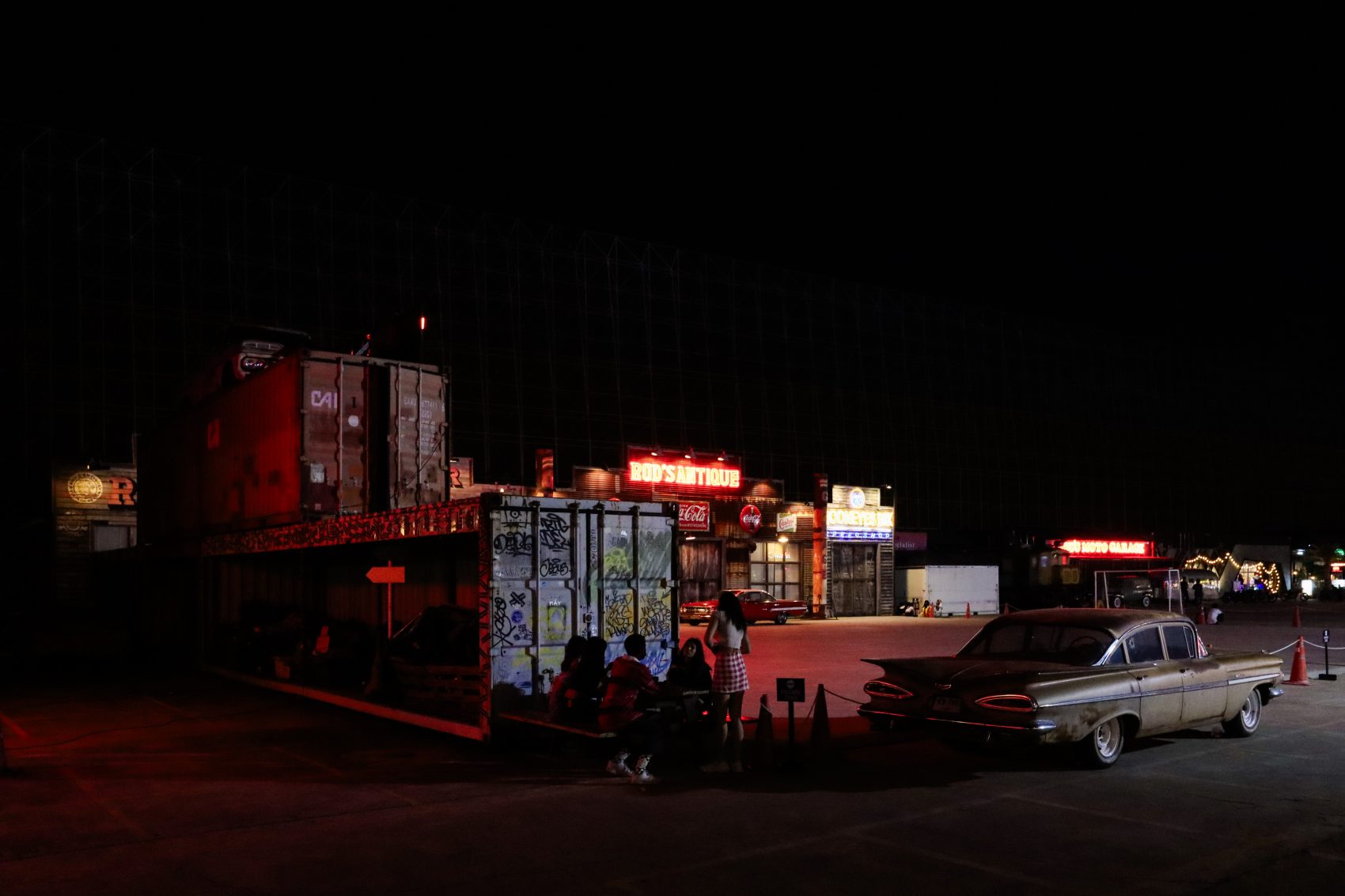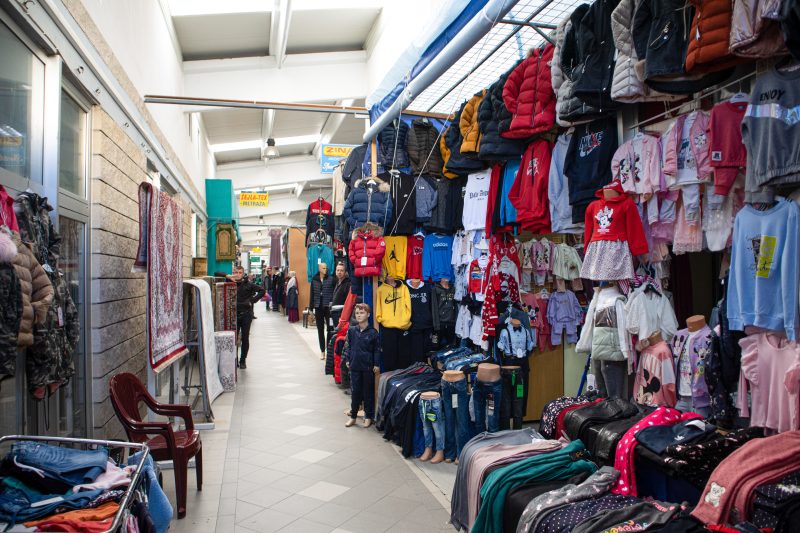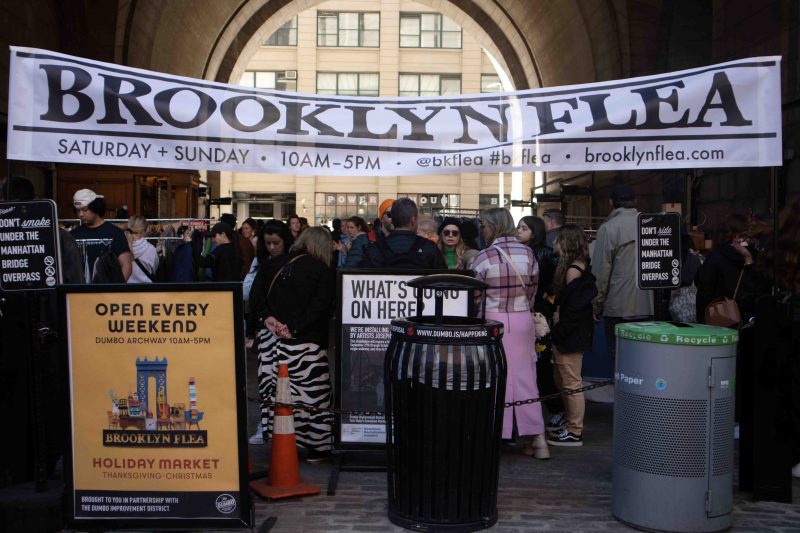- Appropriation
- FWF
- 2018-2023
- Incorporating Informality
CASE STUDY: TALAD ROT FAI
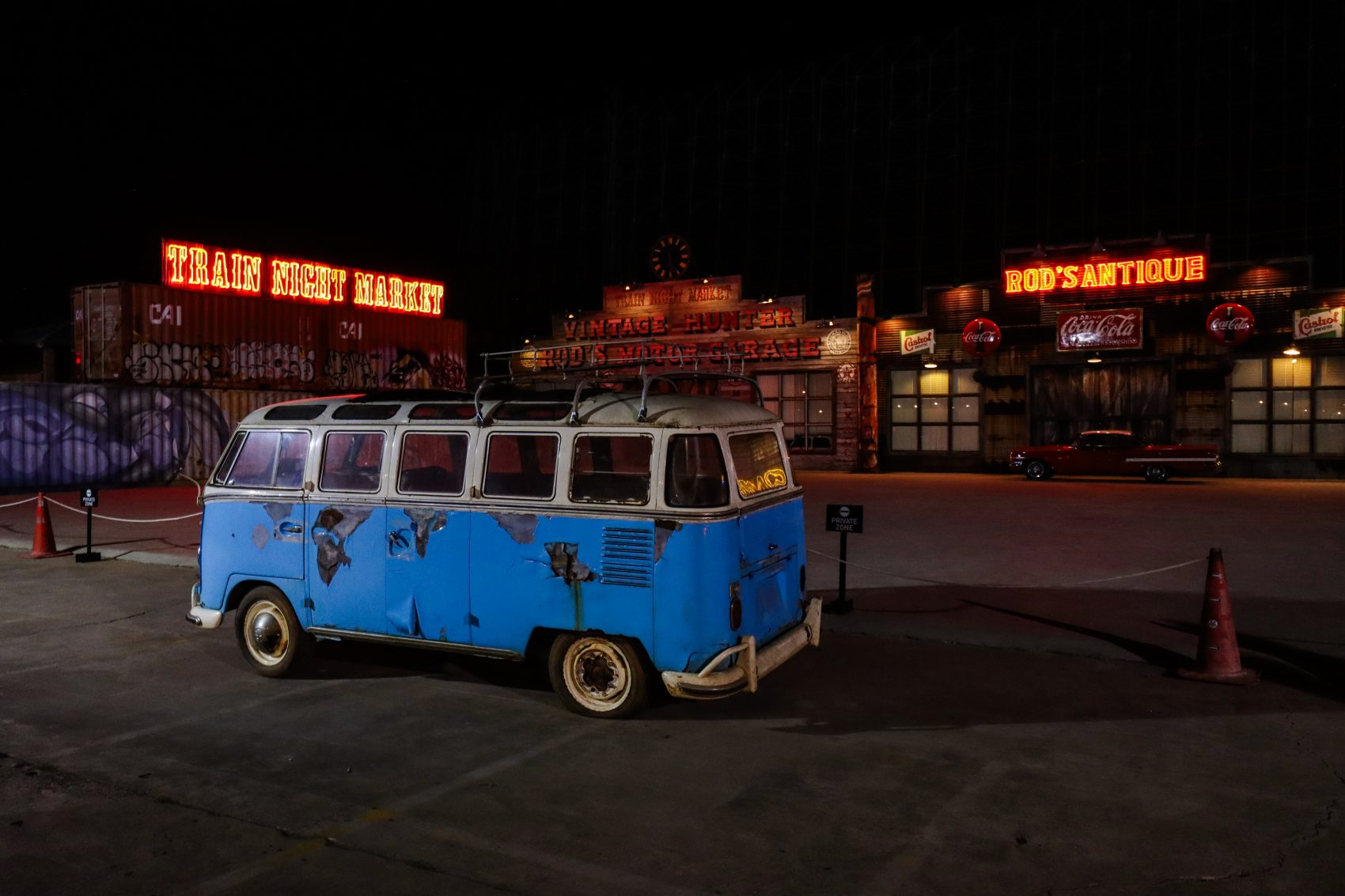
Talad Rot Fai, Skrinakarin, Bangkok, 2023
AN ECOLOGY OF THAILAND’S PRIVATE MARKETS
Bangkok is distinct from cities like Singapore and Hong Kong where the majority of street vendors were incorporated into public markets in the twentieth century. Centralised market spaces in Bangkok take a multitude of forms. They are not only run by district officials on public lands and waterways but also by private developers in the city’s malls and office towers. Although there have been policies by municipal and national leaders to support street vending through permits and centralised markets since the 1940s, they have been inconsistently upheld. Instead, street vendors are often not consulted by these heads of government and consistently face discrimination and eviction.
Talad Rot Fai (Train Night Market) is a chain of private night markets located in Bangkok themed around antiques. Originally located near the Chatuchak Weekend Market on State Railway of Thailand (SRT) land, in 2013 this market was relocated to Srinagarindra Road, with a second branch on Ratchadaphisek Road and a third on Prasoet Manu Kit Road. Founded in 2010 by market entrepreneur Poirod Roikaew, the Talat Rot Fai existed long before this formalised configuration. The privatised market, as it stands today, emerged as a result of the restrictions on street fending by the 2014 coup and accession of Thailand’s military government, led by Prime Minister Prayut Chan-O-Cha.
Talat Rot Fair is open four days a week and specializes in vintage-style products as well as food and drink. With the Train Market’s relocations, the name no longer described the location of the market, but a theme/brand. The Ratchadaphisek Road location became popular as it was located next to an MTR stop (subway station) and a number of large malls, meaning shoppers could move seamlessly in between the mall and market. This element of promenade made the market a beneficial commercial development for the adjacent mall developers. Iron scaffolding soared above the entry to the market displaying a large sign featuring the market’s train logo. In addition to multiple rows of tents, a large portion of the site was dedicated to bars featuring live music and food. Corrugated metal, roughly hewn wood tables, and shipping containers were all used to craft the vintage industrial aesthetic of this lively section of the market.
Location(s): Bangkok, THAILAND
On-Site Collaborator:TRUDE LAURA RENWICK
Visualisations: BILAL ALAMELOVRO KONCAR-GAMULINJOANNA ZABIELSKA
Photography: VINEET DIWADKAR
PETER MÖRTENBÖCK
HELGE MOOSHAMMER
Results of this case study were published in:
The Srinagarindra location is situated on the outskirts of the city and is only accessible by car or multiple transfers on public transportation. A large billboard hung on iron scaffolding marks the entrance to the market from the road. Those arriving by public transport walk down a narrow lane of covered shops and restaurants that directly lead to the market site. Large portions of the market are dedicated to activities other than shopping, such as restaurants and bars featuring live music and a small skatepark. Corrugated metal structures featuring graffiti and housing a number of vehicles, including a train car and airstream trailer, mark the edge of the site just beyond the skate park. Bright red signage announces the building as ‘Rod’s Motor Garage.’
The private appropriation of markets in Bangkok, epitomized by Talat Rot Fair, is a product of what Jonathan Anjaria calls improvisational urbanism. For Anjaria, improvisational urbanism aligns with trends in architecture and urban planning, and new attention is being brought to the ‘ordinary ways people in megacities of the Global South use and produce city spaces.’ This way of reading urban landscapes has the potential to make visible the poor and their everyday spatial practices; however, Anjaria emphasises that proponents of improvisational urbanism do not always critically engage with the social and economic injustices that have led to the production of such spaces.
CONTRIBUTOR(S)
Trude Laura Renwick, PhD, uses ethnographic methods to examine issues of inequality, aesthetics and labour that surround the development of commercial and infrastructural space in Thailand and Southeast Asia.
